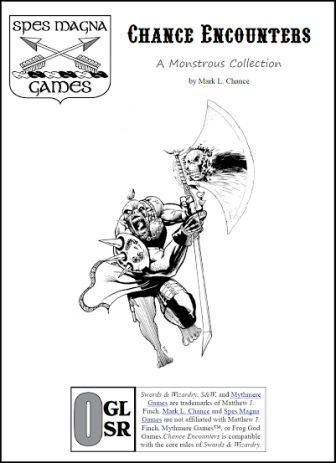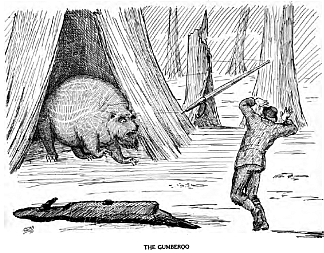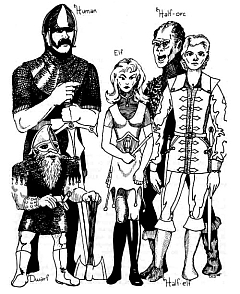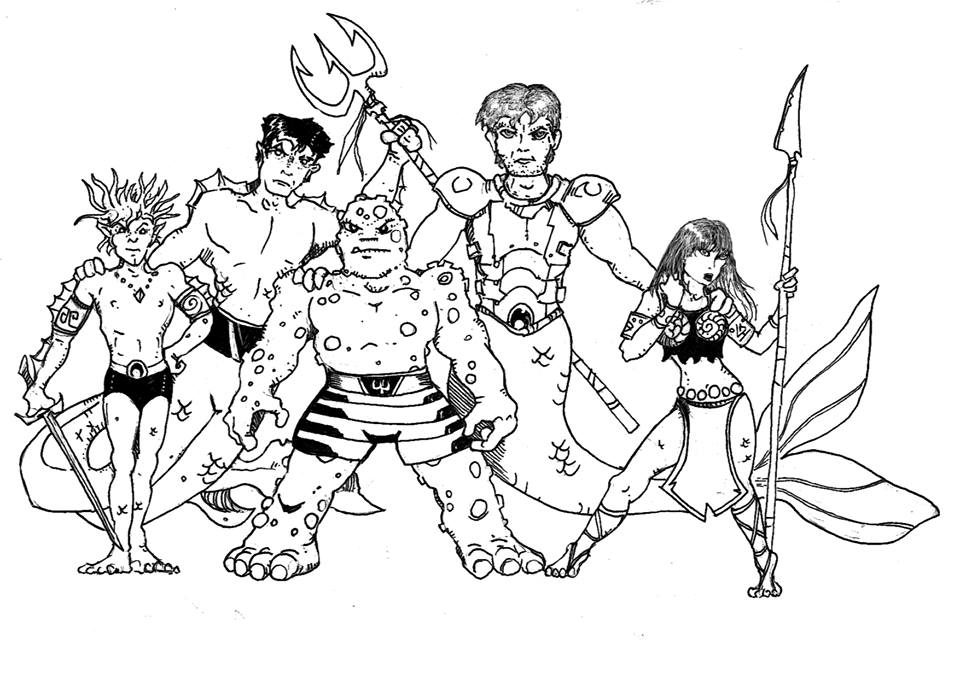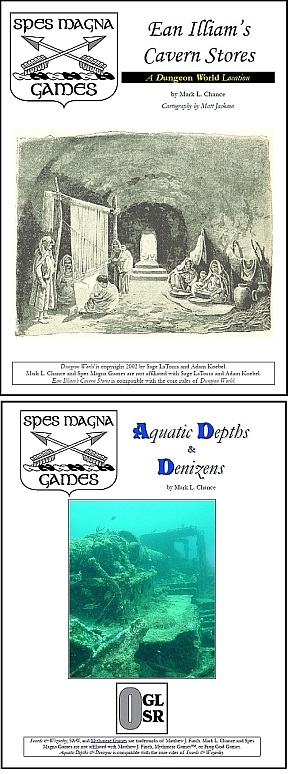
As my summer vacation winds down, I’m finally getting some new products on the Interwebz for you to purchase. This week, I’ve finished Ean Illiam’s Cavern Stores for Dungeon World and Aquatic Depths & Denizens for Swords & Wizardry. The links in that last sentence take you to DriveThruRPG where you can read the product descriptions. The rest of this post includes content excerpts from both PDFs.
From Ean Illiam’s Cavern Stores
Groitzarr’s Vile Menagerie (1 weight)
This common bamboo bird cage holds five scabrous, repulsive birds, each about the size of a parakeet. They perch silently, their rheumy eyes watching their surroundings with disturbing intensity. When you feed one of these foul birds a drop of your blood, roll+CHA. *On a 10+, the bird squawks out a clear, useful prediction of the near future. *On a 7-9, the bird’s prophecy is puzzling and riddlesome. Take a cumulative -1 forward each time to you use the birds more than once per day.
Custom Move: Dangerous Woods
When you act as scout while traveling through the woods near the village, roll+WIS. *On a 10+, choose 2. *On a 7-9, choose 1. If you’re known to have harmed local fey creatures, take -1 ongoing.
* No unwelcome attention is attracted.
* No equipment turns up missing.
* No clues to the true nature of the trouble are discovered.
Mastiff
Thick necked, solid skulled. Blunt muzzles. Crushing jaws and sharp teeth. Ean’s mastiffs are every bit as well-trained as his guards.
Group
Bite (d8 damage) | 6 HP | 1 Armor | Close
Instinct: To obey the master
* Drag down a foe
* Go for the throat
From Aquatic Depths & Denizens
Combat in Three Dimensions
Combatants who fight while swimming may jockey for advantageous position. Whenever an attacker wants to attack with a positional advantage, the attacker and the defender both make saving throws.
* Attacker Succeeds, Defender Fails: The attacker gains a +2 attack roll bonus.
* Defender Succeeds, Attacker Fails: The attack suffers a -2 attack roll penalty.
* Both Fail or Both Succeed: The attacker gains no advantage or penalty.
The Referee should describe the aquatic ballet of violence as attacker and defender push and twist against each other and the water as the attacker attempts to gain a momentary advantage.
Bahari
Squat, thick-skinned, hairless, spotted by barnacle-like growths, Bahari enjoy a +4 bonus on saving throws against poison and a +1 bonus to Armor Class due to their tough hides. They can see in the dark (darkvision) to a limit of 60 feet and have a natural swim speed of 6 and an out-of-water movement rate of 6. Bahari who are player characters may be Fighters, Thieves, or multi-classed Druid/Fighters or Fighter/Thieves.
Those Bahari who are not player characters might have abilities and limitations wildly different from those of an adventuring Bahar. The nature of the Bahar race as a whole is entirely the province of the Referee, and might include non-player characters of any class.
Jet
Spell Level Magic-User, 3rd-level; Range touch; Duration 1 turn/level + 1d6 turns
This spell triples the recipient’s swim speed for its duration. The Referee secretly rolls 1d6 additional turns; the recipient does not know exactly how long Jet will last.
Lycanthrope, Wereshark
HD 7; AC 1 (18); Atks bite (2d8), weapon (1d8); SV 9; Special breathe water, lycanthropy, hit only by magic or silver weapons; MV 0//18; AL C; CL/XP 8/800
Weresharks appear have humanoid torsos and powerful arms topped by the head of a shark. The shark’s distinctive dorsal fin grows from a wereshark’s back. Instead of legs, weresharks have a shark’s powerful tail. These monsters prowl shallow waters for prey. Weresharks can control normal sharks.
Tags: Dungeon World, magic items, monsters, spells, Swords & Wizardry
